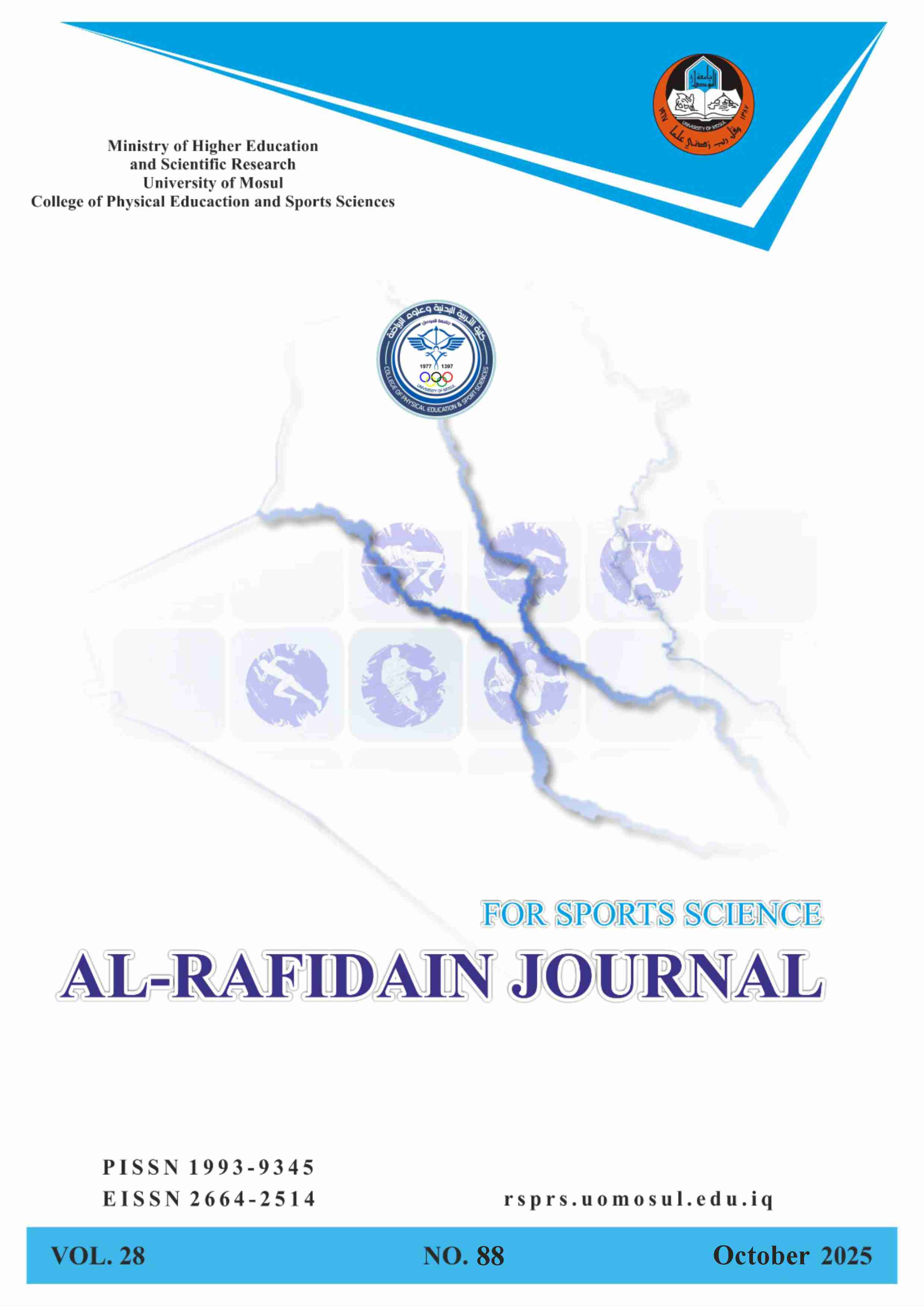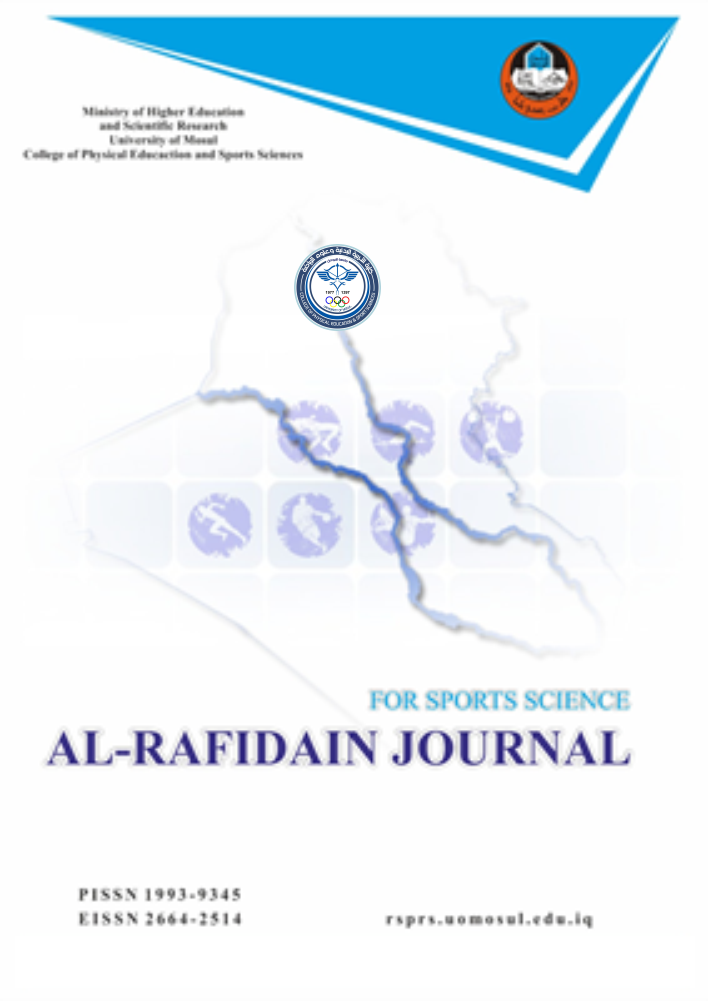The Effect of a Physical Training Curriculum Using the Second Part of the Second Zone of Interval Training Zones on Aerobic Efficiency, Fatigue Index, and Speed Endurance of Advanced Soccer Players
Published
Oct 24, 2025Pages
1-23Abstract
The study aimed to identify the significance of differences in aerobic efficiency, fatigue index, and speed endurance between the pre-test and post-test after implementing a physical training program based on the timing of (the second part of the second zone) of interval training zones.
The researchers employed an experimental method with a one-group design, including both pre- and post-tests. The research population consisted of 28 football players from Duhok Sports Club, which competes in the Iraqi First Division Football League. The research sample included only 20 players after excluding three goalkeepers and five players due to injury or absence from post-tests. Therefore, the sample represented 71.42% of the total population.
The training program was carried out in the second part of the second interval training zone based on time, during both the general and specific preparation periods, for eight weeks, three days a week (Saturday, Monday, and Wednesday). On the other three days, the team performed their regular training, and Friday was a rest day.
The program included two mesocycles, each made up of four microcycles, totaling 24 training sessions. After conducting pre- and post-tests, collecting the study data, and performing statistical analysis, the researchers drew several conclusions, the most important of which were:
1. The training program proved effective in improving the studied variables (fatigue index, aerobic efficiency, and speed endurance) among the sample, as all showed significant gains when comparing pre- and post-tests.
2. The increase in the fatigue index is due to the direct effect of anaerobic exercises included in the training program, where short rest periods and high exercise intensity caused lactate buildup, leading to noticeable muscle fatigue—aligned with the traits of anaerobic endurance.
3. The participants demonstrated improved aerobic efficiency through regular interval training, which boosted their maximum oxygen uptake (VO₂ max) and enhanced the function of their respiratory and circulatory systems. This improvement positively impacted their ability to perform for more extended periods.
Bottom of Form
References
- Abdel Fattah, A. A. A. (1994). Swimming training for advanced levels. Dar Al-Fikr Al-Arabi.
- Abdul Zaid, M. J., et al. (2021). Physical fitness. Dar Al-Kutub.
- Al-Brifkani, Z. M. A. Q. (2012). The effect of different ratio interval training zones on a number of physical and skill variables for youth soccer players [Unpublished doctoral dissertation]. College of Physical Education and Sports Sciences, University of Duhok.
- Al-Dabbagh, A. A. G., et al. (2006). The effect of accumulated anaerobic effort on some blood and functional variables. Journal of Basic Education College Research, 3(3).
- Al-Numan, A. Z. S. (2009). The effect of different work-to-rest ratios in anaerobic interval training on a number of physical, skill, and functional variables in young soccer players [Unpublished doctoral dissertation]. College of Physical Education, University of Mosul.
- Al-Rashidi, K. M. H. (2021). The effect of two methods based on a programmed interval training system on specific endurance, lactate level, and achievement in the 400-meter run for juniors of specialized schools in Nineveh Governorate [Unpublished master’s thesis]. College of Physical Education, University of Mosul.
- Al-Zubaidi, A. M. A., & Al-Hayali, M. H. (2019). Scientific foundations of sports training. Noon House for Printing, Publishing, and Distribution.
- Al-Zubaidi, A. M. A., & Al-Hayali, M. H. (2022). A contemporary perspective on sports training. Al-Kashkul Publishing and Distribution House.
- Boya, M. N. (2008). The transfer of the effect of training on some physical traits representing energy production systems and its effect on some functional and biochemical variables [Unpublished master’s thesis]. College of Physical Education, Salah al-Din University.
- Glaister, M. (2005). Multiple sprint work: Physiological responses, mechanisms of fatigue, and the influence of aerobic fitness. Sports Medicine, 35(9), 757–777. https://doi.org/10.2165/00007256-200535090-00003
- Kamash, W. S. (2012). The effect of special exercises on developing some basic physical and skill abilities and their relationship to scoring accuracy from static and moving positions in futsal [Unpublished doctoral dissertation]. College of Physical Education, University of Baghdad.
- Khuraibat, R. (2014). The selected group in training and sports physiology. Kitab Publishing Center.
- BrianMac Sports Coach. (n.d.). Running-based anaerobic sprint test (RAST). https://www.brianmac.co.uk/rast.htm
- Topend Sports. (n.d.). Beep test calculator. https://www.topendsports.com/testing/beepcalc.htm
Identifiers
Download this PDF file
Statistics
How to Cite
Copyright and Licensing

This work is licensed under a Creative Commons Attribution-NonCommercial 4.0 International License.







